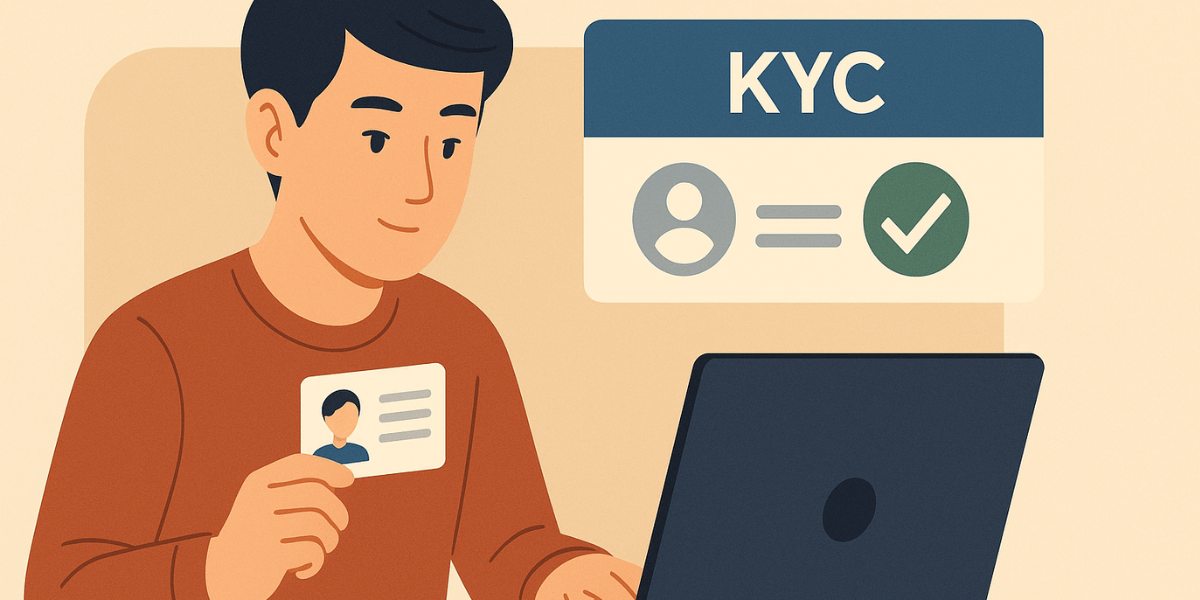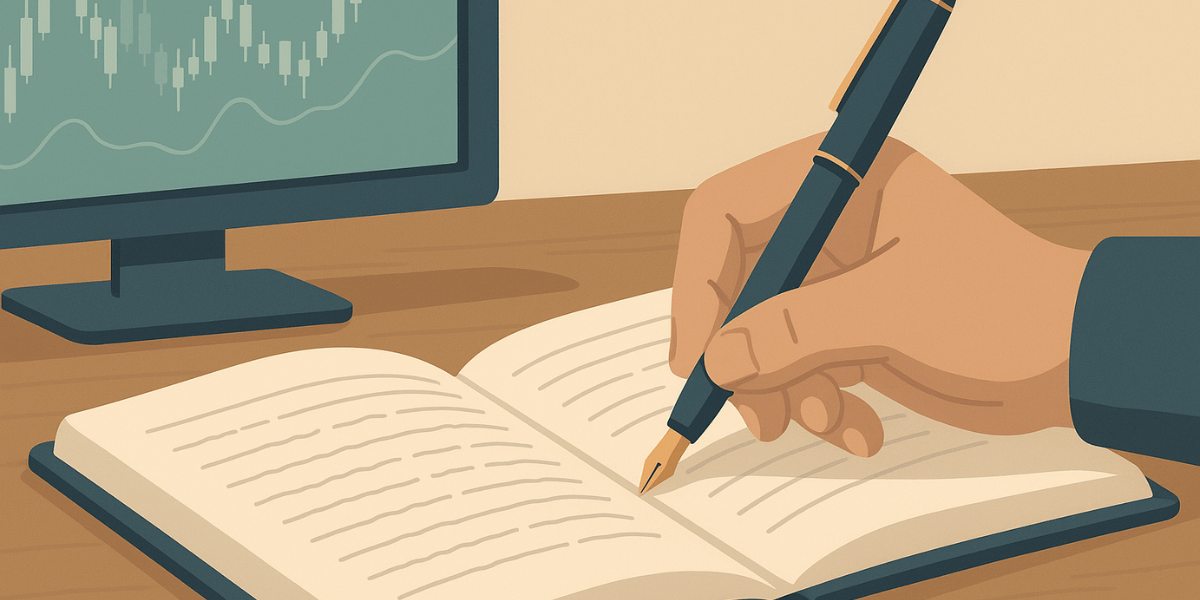Understanding how to read forex quotes is crucial for anyone looking to trade currencies. If you don't get them, you might make bad decisions, miss out on good chances, or have your trading plans fall apart. This article will help you get familiar with what forex quotes are all about.
Key Takeaways
- A forex quote shows the current exchange rate between two currencies, with a bid price and an ask price.
- The bid price is the amount a buyer is willing to pay, and the ask price is the amount a seller is willing to accept.
- The difference between the bid and ask prices is called the spread, and it's the cost of your trade.
- Always pay attention to the decimal places in a quote; they matter a lot for calculating value.
- Practice converting between direct and indirect quotes to understand how currency pairs work.
Understanding How to Read Forex Quotes
What are Forex Trading Quotes?
Forex trading quotes are the real-time exchange rates between two different currencies. They show you what one currency is worth in relation to another. These quotes consist of a bid price and an ask price, and they're significant for anyone trying to make informed decisions in the forex market. These quotes are constantly changing due to market factors, such as economic news and global events, which provide traders with an opportunity to predict where currency prices are headed. A typical forex spread is shown like this: [Currency Pair] [Bid Price] / [Ask Price].
Components of a Forex Quote
Okay, so every forex quote has a few key parts you need to know about:
- Currency Pair: This information shows you which two currencies are being exchanged, such as EUR/USD (Euro vs. US Dollar). The first currency is the base currency, and the second is the quote currency.
- Bid Price: This is the highest price a buyer is willing to pay for the base currency. It's the price you'd get if you were selling the base currency.
- Ask Price: Also known as the offer price, this is the lowest price a seller is willing to accept for the base currency. It's the price you'd pay to buy the base currency.
The Bid-Ask Spread Explained
The bid-ask spread is the difference between the bid price and the ask price. It represents the cost of the transaction. The EUR/USD quote is 1.1000/1.1005, with a spread of 0.0005 (1.1005 - 1.1000). This spread is how brokers make money. A smaller spread is generally preferable for traders because it results in lower transaction costs. Understanding the bid and ask prices is key to successful trading.
The bid-ask spread is a critical concept. It directly impacts your profitability. Always consider the spread when evaluating a potential trade, as it represents an immediate cost that needs to be overcome for the trade to become profitable.
Types of Forex Trading Quotes
Direct Quotes in Forex Trading
Direct quotes are pretty straightforward. They show the price of the domestic currency in terms of the foreign currency. For example, if you're in the US, a direct quote would show how many US dollars it takes to purchase one unit of another currency, such as the Euro. So, if EUR/USD is quoted at 1.2000, it means one Euro costs $1.20. It's a simple way to see the exchange rate from your home country's perspective.
Indirect Quotes in Forex Trading
Indirect quotes flip the script. Instead of showing how much of your currency it takes to buy a foreign currency, it shows how much of the foreign currency you can buy with one unit of your currency. Using the same EUR/USD example, an indirect quote would tell you how many Euros you get for one US dollar. If the indirect quote is 0.8333, it means one USD buys you 0.8333 Euros. It's just another way to look at the currency price movements.
American and European Terms
Currency quotes also follow certain conventions, often referred to as American and European terms. These terms dictate which currency is the base currency (the one being quoted) and which is the quote currency (the one used to express the value).
- American Terms: USD is the base currency (e.g., USD/CAD). This means the quote shows how much of the other currency one US dollar can buy.
- European Terms: USD is the quote currency (e.g., EUR/USD). This shows how much one Euro costs in US dollars.
- Not all currency pairs strictly adhere to these terms, but they serve as a good general guideline.
Understanding these terms helps avoid confusion when reading foreign exchange (forex) quotes. Knowing whether you're looking at an American term or a European term quote can prevent misinterpretations and ensure you're making informed trading decisions.
These conventions can sometimes be flexible, and it's always best to double-check the specific quote to ensure you understand which currency serves as the base and which serves as the quote.
How to Read and Understand Forex Trading Quotes
To get into forex trading, you need to know how to read those quotes. If you don't understand them or misread them, you could end up losing money, missing out on opportunities, or using ineffective trading strategies. Let's break it down.
Identifying the Currency Pair
First things first, you gotta know what currency pair you're looking at. Forex quotes always show two currencies. The first one is the base currency, and the second one is the quote currency. For example, in the EUR/USD pair, EUR is the base currency, and USD is the quote currency. It's that simple.
Locating the Quote on Trading Platforms
Next, you need to find the quote itself. You can usually find these on trading platforms, financial news sites, or special charting software. These platforms are where you'll see the real-time prices that drive your trading decisions.
Interpreting Bid and Ask Prices
The quote will show two prices, separated by a slash. The first price is the bid, and the second is the ask. The bid price is the highest price a buyer is willing to pay for the base currency. It's the price you'd get if you were selling the base currency. The ask price, also known as the offer price, is the lowest price a seller is willing to accept for the base currency. It's the price you'd pay if you were buying the base currency.
Understanding the difference between the bid and ask prices is super important. The bid is what you get when you sell, and the ask is what you pay when you buy. This difference, known as the spread, is how brokers generate their profits. Keep an eye on it, because a wider spread means higher transaction costs.
Here's a simple breakdown:
- Bid Price: The price at which you can sell the base currency.
- Ask Price: The price at which you can buy the base currency.
- Spread: The difference between the bid and ask prices, representing the cost of the transaction.
Calculating and Interpreting the Bid-Ask Spread
Determining the Bid-Ask Spread
The bid-ask spread is a vital concept in forex trading. It represents the difference between the highest price a buyer is willing to pay (the bid) and the lowest price a seller is willing to accept (the ask). Calculating it is straightforward: simply subtract the bid price from the ask price.
For example, if the EUR/USD quote is 1.1000/1.1002, the spread is 0.0002. This difference is usually measured in pips (percentage in point), where one pip is typically 0.0001 for most currency pairs. So, in this case, the spread would be 2 pips. Understanding how to calculate the bid-ask spread is the first step in assessing trading costs.
Significance of the Spread in Trading
The bid-ask spread directly impacts a trader's profitability. It's the cost of entering a trade. A wider spread means a higher cost, making it more challenging to achieve a profitable trade, especially for short-term strategies like scalping. Conversely, a narrower spread reduces the cost, potentially increasing profitability. Here are a few points to consider:
- Transaction Cost: The spread is the broker's commission or fee for facilitating the trade.
- Profitability: A wider spread requires a larger price movement in your favor to become profitable.
- Market Liquidity: Narrower spreads usually indicate higher liquidity, meaning there are many buyers and sellers in the market.
Applying the Quote to Your Trading Strategy
How you interpret and apply the forex quote to your trading strategy is crucial. If you're planning to buy the base currency, you'll execute at the ask price. If you're selling, you'll execute at the bid price. Always factor in the spread when setting your profit targets and stop-loss levels. A strategy might look great on paper, but if the spread eats into your potential profits, it might not be viable. Also, be aware that spreads can widen during periods of high volatility or low liquidity, such as during major news announcements or outside of peak trading hours. This can significantly affect your trading outcomes. It's important to practice currency conversions to fully understand the relationship between the two currencies in the pair.
Understanding the bid-ask spread is not just about knowing the numbers; it's about understanding the underlying market dynamics and how they affect your bottom line. It's a key element in making informed trading decisions and managing risk effectively.
Tips for Accurate Forex Quote Interpretation
Using Proper Decimal Places
It's easy to overlook, but always pay close attention to the decimal places in a forex quote. Most currency pairs are quoted to four or five decimal places. For example, if EUR/USD is at 1.1000, it means one Euro is worth 1.1000 US Dollars. A small error here can lead to big miscalculations.
Practicing Currency Conversions
If you're trading a currency pair with an indirect quote, become familiar with converting it to a direct quote and vice versa. This ensures you understand the relationship between the two currencies. It might seem basic, but it's a step that can save you from making mistakes.
Considering Market Conventions
Forex quoting conventions can change depending on the region. Direct quotes (such as EUR/USD) are common in many places, but some regions may use indirect quotes (like USD/JPY). Knowing these conventions helps you avoid confusion and trade more effectively.
Understanding these nuances is key to making informed decisions. Don't assume that what works in one market will automatically apply in another. Always double-check the market conventions you're trading in.
Advanced Strategies for Reading Forex Quotes
Analyzing Market Trends
To get good at reading forex quotes, you need to look beyond the numbers. Understanding the overall market trend is super important. This involves determining whether a currency pair is generally trending upward (bullish), downward (bearish), or moving sideways (ranging). Spotting these trends can give you a heads-up on where prices are likely to head next. You can use different tools to help you with this, like:
- Trendlines: Draw lines connecting higher highs or lower lows to see the trend.
- Moving Averages: These smooth out price data to show the average price over a period.
- Chart Patterns: Look for patterns such as head and shoulders or double tops and bottoms.
Market analysis isn't just about looking at charts; it's about understanding the story behind the numbers. What economic events are influencing the currencies? What are the political factors at play? The more you know, the better your trading decisions will be.
Utilizing Technical Analysis
Technical analysis involves using historical data to predict future price movements. It's like being a detective, using clues from the past to solve the mystery of where the market is going. Some common technical indicators include:
- RSI (Relative Strength Index): Measures the speed and change of price movements.
- MACD (Moving Average Convergence Divergence): This indicator shows the relationship between two moving averages.
- Fibonacci Retracements: Identify potential support and resistance levels based on Fibonacci ratios.
Utilizing these tools can help you identify suitable entry and exit points for your trades. For example, if the RSI is above 70, it may indicate that the currency pair is overbought and due for a pullback. Combining multiple indicators can give you a stronger signal. You can also use chart analysis to identify potential trading opportunities.
Understanding Volatility and Risk
Volatility is how much the price of a currency pair moves over a certain period. High volatility means prices are swinging wildly, while low volatility means prices are relatively stable. Understanding volatility is crucial to effective risk management. If a currency pair is highly volatile, you should use smaller position sizes or wider stop-loss orders to protect your capital.
Here's a simple table showing how volatility can affect your trading:
|
Volatility Level |
Price Movement |
Risk Level |
Strategy |
Stop-Loss |
Position Size |
|
High |
Large Swings |
High |
Short-Term |
Wider |
Smaller |
|
Low |
Small Swings |
Low |
Long-Term |
Narrower |
Larger |
It's also important to understand the risks associated with each trade. Never risk more than you can afford to lose, and always use stop-loss orders to limit your potential losses. Remember, even the best traders have losing trades, so risk management is crucial for long-term success.
The Importance of Understanding Forex Quotes
Making Precise Trading Decisions
Understanding forex trading (FX) quotes is important because it lets you make smart choices about when to buy or sell. If you don't know what the numbers mean, you're basically gambling. Knowing the exact price of a currency pair at any given moment allows you to calculate potential profits and losses accurately. This precision is key to developing and executing successful trading strategies. It's like trying to build a house without knowing how to read a measuring tape – you might get lucky, but most likely, things will go wrong.
Managing Risk Effectively
Effective risk management is another significant reason why understanding forex quotes is important. By knowing the bid and ask prices and the spread, you can set appropriate stop-loss orders and take-profit levels. This helps protect your capital and limits potential losses. Volatility in the forex market can be intense, and without a solid grasp of quotes, you could easily get caught in a bad trade. It's like driving a car without brakes – you might be able to go fast, but you won't be able to stop when you need to.
Seizing Market Opportunities
Being able to quickly read and interpret forex quotes allows you to spot and capitalize on market opportunities as they arise. The foreign exchange market moves quickly, and prices can change in an instant. If you can understand what the quotes are telling you, you can react quickly and capitalize on favorable price movements. This is especially important for day traders and scalpers who rely on small, quick profits. It's like being a surfer – you need to be able to read the waves to catch the good ones.
Understanding forex quotes is like having a secret weapon in the market. It provides you with the knowledge and confidence to make informed decisions, manage risk effectively, and capitalize on opportunities. Without it, you're just guessing, and in the forex market, guessing can be very expensive.
Here are some key benefits of understanding forex quotes:
- Improved decision-making
- Better risk management
- Increased profitability
- Greater confidence in trading
Conclusion
Getting a handle on foreign exchange (forex) quotes is crucial if you're going to trade currencies. It's like learning the basic rules of a game before you start playing. Knowing how to read those bid and ask prices and what they mean helps you make more intelligent choices. It's not about being perfect, but about understanding the tools you're using. The more you practice looking at these quotes and seeing how they move, the more comfortable you'll get. It does make a difference in how you approach the market and helps you avoid some common mistakes.
Frequently Asked Questions
What is a forex quote?
A forex quote displays the price of one currency in relation to another. It's like saying how many U.S. dollars you need to buy one Euro. These quotes consist of two parts: a 'bid' price (the amount buyers are willing to pay) and an 'ask' price (the amount sellers are seeking).
What's the difference between bid and ask prices?
The bid price is the highest price a buyer is willing to pay for the base currency. The ask price (also known as the offer price) is the lowest price a seller is willing to accept for a specific currency. The difference between these two is the 'spread', which is basically the cost of making the trade.
How do I read a currency pair, such as EUR/USD?
A currency pair like EUR/USD indicates that you're comparing the Euro (EUR) against the U.S. Dollar (USD). The first currency, EUR, is the 'base' currency, and the second, USD, is the 'quote' currency. The quote indicates the number of units of the quote currency required to obtain one unit of the base currency.
What is the bid-ask spread, and why is it important?
The bid-ask spread is the small gap between the bid and ask prices. It's how brokers or market makers earn money. A smaller spread usually means it's cheaper to trade that currency pair.
What are direct and indirect quotes?
A direct quote shows the value of one unit of foreign currency in terms of your home currency. For example, if you're in the U.S., EUR/USD is a direct quote. An indirect quote shows the value of one unit of your home currency in terms of a foreign currency.
Why is it important to understand forex quotes?
Understanding forex quotes is super important because it helps you know exactly how much you're buying or selling a currency for. This knowledge enables you to make informed trading decisions, manage your risks more effectively, and identify opportunities to generate profits in the market.
Note: Any opinions expressed in this article are not to be considered investment advice and are solely those of the authors. Singapore Forex Club is not responsible for any financial decisions based on this article's contents. Readers may use this data for information and educational purposes only.







